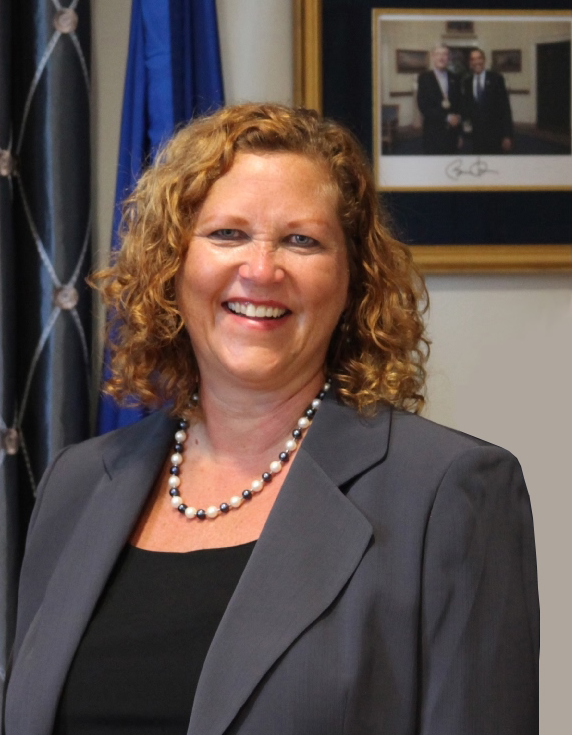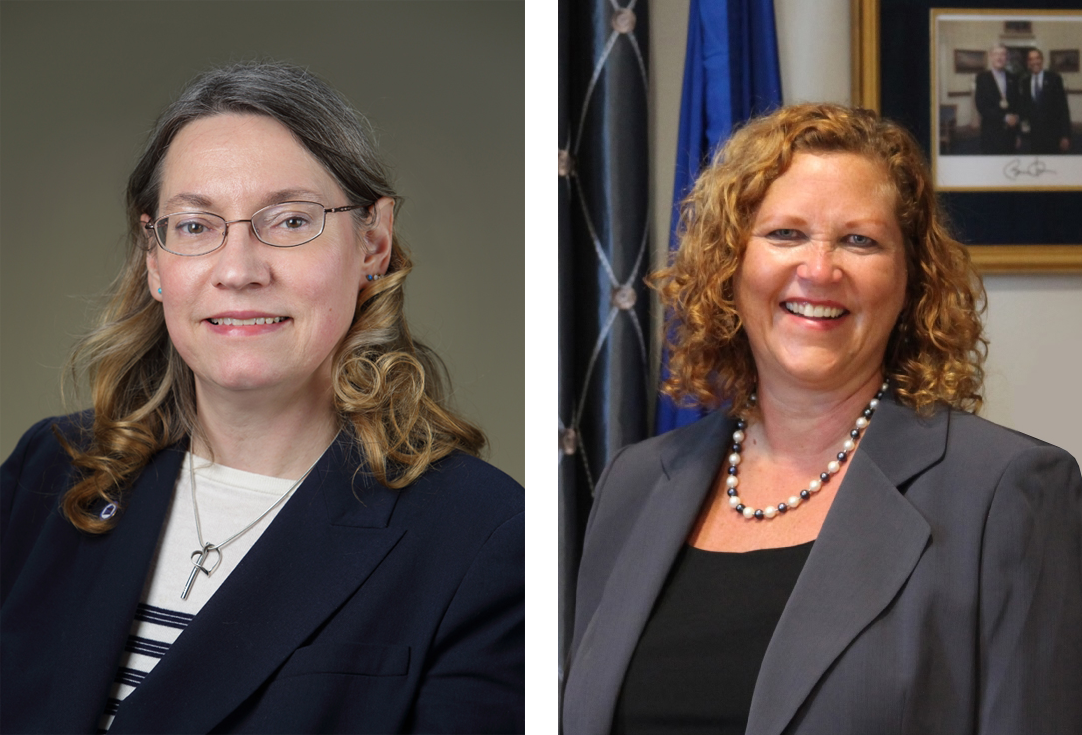Wednesday, November 30, 2022
Q&A with CIT Director Dr. Andrea Norris

 Dr. Susan Gregurick spoke with Dr. Andrea Norris, a longtime colleague and friend, to reflect on her tenure at NIH before her retirement at the end of this year. Dr. Norris was an instrumental leader in the creation of the Science and Technology Research Infrastructure for Discovery, Experimentation, and Sustainability (STRIDES) Initiative, which allows NIH to explore the use of cloud environments to enhance NIH researchers use of data by partnering with commercial providers Google, AWS, and Microsoft Azure.
Dr. Susan Gregurick spoke with Dr. Andrea Norris, a longtime colleague and friend, to reflect on her tenure at NIH before her retirement at the end of this year. Dr. Norris was an instrumental leader in the creation of the Science and Technology Research Infrastructure for Discovery, Experimentation, and Sustainability (STRIDES) Initiative, which allows NIH to explore the use of cloud environments to enhance NIH researchers use of data by partnering with commercial providers Google, AWS, and Microsoft Azure.
The STRIDES program began in December of 2017, with full partnerships established with Google Cloud Platform (GCP) in July of 2018, Amazon Web Services (AWS) in October of 2018, and Microsoft Azure in July of 2021. STRIDES has achieved significant growth: STRIDES has obligated $128M in funding, over 200PB of data have been stored in the cloud via STRIDES, 109 academic institutions have enrolled in STRIDES, and 4,698 people have received training through courses offered in STRIDES.
---
Susan Gregurick: Andrea, it’s been such a pleasure working together over the years, I’m just so sad to see you go. But since the community may not know you as well as I do, can you just tell us a little bit about how you came to NIH and what you see your role as here at NIH?
Andrea Norris: Over the course of my federal career, I’ve had the privilege to serve at three top federal science agencies that are each focused on innovation and discovery in different ways. I joined NIH after working 10 years in industry, 10 years at NASA, and 10 years at the National Science Foundation. And I’ve been at NIH for a little more than 10 years. It has been such an honor to work with the incredibly smart, talented, and dedicated people that are here, and to support NIH’s important mission to improve human health and reduce illness. At NIH, I serve as both the Director of the Center for Information Technology as well as the NIH Chief Information Officer. An essential responsibility of the NIH CIO is to serve as a strategic advisor to the NIH Director and other NIH leadership on IT and information management matters. The Center for Information Technology focuses on delivering NIH-wide scientific computational capabilities, technologies and services to enable NIH staff to perform world-class research, plan and manage its extramural programs, and meet institutional management requirements. In both roles, I work with all Institutes, Centers, and Offices to assure our technology investments are meeting our research and institutional management needs and are being managed effectively, securely, and appropriately.
Gregurick: That’s just such an amazing trajectory. I really appreciate the depth that you bring to NIH, in terms of your experience at NASA and NSF, and the depth of personal attention that you have given to each and every one of our institutes and centers in the areas of computing and data in management. I wonder if we could just drill down on one particular thing, because it's the one legacy that you're going to leave that will make the biggest impact in biomedical research, and that's cloud computing. What inspired you to look into cloud computing, and then to create the STRIDES Initiative? How did you have the foresight to know that this is the one thing that NIH should really capitalize on?
Norris: Susan, we couldn't have been at NIH during a more exciting decade. When we both came to NIH, NIH was in the early years of big biomedical research data — sometimes referred to as a big data tsunami. Tremendous advances in technical capabilities were enabling researchers to capture and analyze new kinds of biomedical data – for example, genomic data, environmental data, and electronic health record data -- using innovative methods and tools in unprecedented ways. We knew we had to develop more strategic approaches to address these exciting big data opportunities –- and improve our ability to effectively use new and evolving technologies. Those were early days in cloud computing and many organizations were transitioning to the cloud to take advantage of advanced digital capabilities, gain greater efficiencies, and avoid capital investments in hardware and infrastructure. We needed to do the same in biomedical research.
We worked to get support and funding for the program, and we invited leading cloud-based platform providers to work with NIH on an experiential journey to determine how to best facilitate the national research community to adopt new cloud-based methods, tools, and approaches for biomedical research. There was a pretty high degree of uncertainty all around, but Google Cloud and Amazon Web Services agreed to partner with NIH (and most recently, Microsoft Azure). They have been terrific partners and I think we hit the timing just right. If we had tried to do something like this too soon, I’m not sure we would have had enough success in the first year to give the companies enough confidence that this was something they could continue with. And if we had started later, we would have missed a lot of the opportunity.
STRIDES just took off like wildfire, so much more than we would have ever expected.
Gregurick: STRIDES is probably one of the most successful endeavors that we’ve done, at least in data and compute. From your perspective, what’s been the biggest success story of STRIDES?
Norris: It's been so exciting to be part of something where every graph you look at, from late 2018 to now, the curves are essentially just straight vertical lines, by every measure. This includes rates of adoption, computational usage, amount of data moved to the cloud, number of researchers trained, costs avoided, etc. While more than 1,000 research institutions and research programs have already adopted STRIDES, we fully expect it to continue to grow. It’s a win for everybody — NIH saves money and researchers have capabilities they would not have been able to have in many cases. But the real wins are when we talk to program managers and researchers and they say, “I couldn’t have done this work without STRIDES,” or “this used to take six months, and now I can do it in a day or two.” It just opens up so many avenues for computationally enabled research in in more effective ways.
Gregurick: What can we attribute all that success to?
Norris: The unwavering support of Dr. Larry Tabak, and the entire NIH leadership team; the outstanding partnership with you Susan and the Office of Data Science Strategy; the tireless work of Nick Weber, the STRIDES Program Manager who has been here since the very beginning and the dedicated STRIDES team members; our industry partners and teammates who are truly committed to the scientific endeavor; and all of the STRIDES participants who have worked with us to implement this initiative. We have also tried to keep the program focused. While I think timing helped, the simplicity of the model also helped a lot. Research institutions just enroll, and if you are funded by NIH, you can take advantage of cloud as much or as little as required.
Gregurick: That is really insightful. So now, looking toward the future, if you’re peering into a crystal ball today, where do you think the future of cloud computing and STRIDES biomedical research is going in the next several years?
Norris: I think it'll get cheaper, it'll get easier to use, and more capabilities will be available for researchers. And I think the big thing that has to happen is we have to make cloud so easy and intuitive that anyone can use it. Today, there is a fairly steep learning curve for our researchers to use cloud-based technology resources. Researchers have to understand the language of cloud and have at least a basic understanding of how it works, and they typically have to use new tools and different interfaces than what they’re used to. And that's part of the barrier to entry for some researchers. We need to get to where researchers don't have to understand the world of cloud, they just need to be able to use it. We need to make the use of cloud just as intuitive as opening any application on their laptop and knowing how to use it. We are on a good path forward, but there is still more work to be done.
Gregurick: I absolutely love your vision of lowering the barrier and catalyzing the use of Cloud for basic biomedical researchers in the future. If we could make it as easy as people logging on to their laptop or their desktop and just easily doing things at scale on the Cloud, we would have made a huge impact. One last question: As you're looking to the next steps in your life, what do you hope is your legacy from your work here at NIH and what new doors are you looking to open as you retire?
Norris: The first door I want to open is the door to my beach house! I want to take some time to relax a bit, spend more time with my family and think about what’s next without the pressures of everyday work requirements. I’m not sure what I will do after that, but I am interested in continuing to be engaged in these wonderful kinds of activities. It’s what I love doing. I’m so proud of the many ways that technology has enabled NIH’s accomplishments over the last decade. We should continue to experiment and exploit opportunities to look for how we can use technology to accelerate what we do, which is to turn knowledge into discovery, and accelerate impacts on health and disease for people around the world. I'm proud and happy to have been a small part of all that, and I just hope the excitement of all of that continues.


